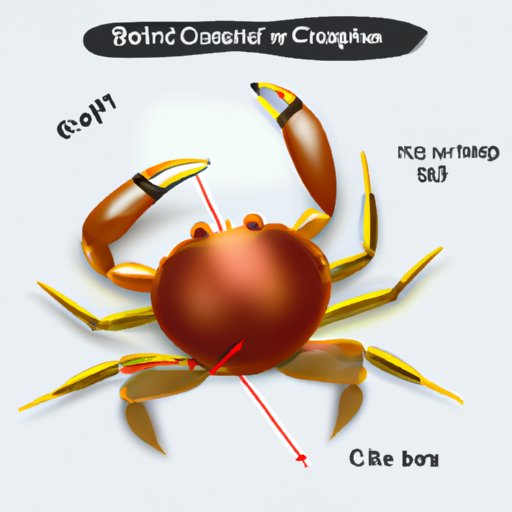
The Ultimate Step-by-Step Guide to Drawing a Realistic Crab
Do you struggle with drawing crabs? Do your attempts always end up looking like a bunch of lines and circles that vaguely resemble the crustacean? Fear not! In this article, we’ll guide you through the process of drawing a realistic-looking crab that will impress your friends and family. Not only will you gain a new artistic skill, but you’ll also have fun doing it!
Step-by-Step Tutorial
The key to drawing a realistic crab is to start with the basic shape and add details gradually. Begin by drawing a small circle for the crab’s head and a larger circle for its body. Then, add the crab’s legs by drawing thin, curved lines extending from the body. Make sure to proportion them correctly, with the front legs being shorter than the back ones. Add small claws at the end of each leg.
Next, draw the crab’s eyes and mouth. The eyes should be on the top of the head, and the mouth can be drawn in the shape of an upside-down triangle. Remember to add details to the eyes, such as the pupils and eyelids, to make them more lifelike.
Now it’s time to add more details to make the crab look realistic. Draw the crab’s shell by adding a series of bumps and ridges on top of the body, then add texture to the legs by drawing parallel lines to simulate the crab’s exoskeleton. Finally, draw small hairs on the legs and claws to complete the look.
There you have it! A basic tutorial on how to draw a crab that looks like the real deal. Don’t worry if it doesn’t look perfect the first time – just keep practicing.
Tips and Tricks
When starting, try to draw lightly and with a pencil that can be easily erased. This way, you can fix any mistakes without damaging the paper. Always use reference images or photos, as this will help you to understand the crab’s anatomy better and get proportions right. Don’t beat yourself up if it doesn’t turn out perfect the first time – drawing takes time, effort and lots of practice! If you’re finding it challenging to get certain parts of the crab right, just break down the drawing into smaller parts, focusing on each part individually before putting it all together.
It’s common for beginners to make some mistakes when drawing crabs. The most typical errors include making the claws too oval or round, drawing the legs too straight, or making them too thick. Remember, crabs have thin, spindly legs with lots of texture and small details like bumps and hair follicles. If you’re unsure about a particular detail, seek inspiration from reference photos and online tutorials.
Video Tutorial
If you prefer something more visual, check out our step-by-step video tutorial. In this live-action video, we’ll guide you through the process of drawing a crab and give you actionable tips and tricks to enhance your drawing skills. With voice-over instructions and on-screen visuals, you’ll be able to see the process in action and follow along.
Infographic
If you’re a visual learner, you’ll love our infographic. It provides an excellent visual representation of the process of drawing a crab, breaking down each step clearly and concisely. Use diagrams, illustrations, and text to explain each stage of the tutorial. This fun and engaging way of learning to draw is perfect for children and beginners.
Common Mistakes
We’ve compiled a list of the most common mistakes people make when drawing crabs, so you can avoid doing the same. Such mistakes include the wrong body proportions, claws that are too thick, and legs that don’t bend naturally. We also offer helpful tips on how to correct these errors, such as using reference images, practicing regularly, and breaking down the drawing into smaller parts.
Advanced Techniques
If you’re an experienced artist who wants to take your crab drawing skills to the next level, we have some advanced techniques for you to try. Techniques like shading, adding highlights, and playing around with symmetry, can put a unique spin on your crab drawing. Follow along with our step-by-step suggestions, and you’ll be an expert in no time.
Conclusion
Now that you have a comprehensive guide on how to draw a realistic crab, what are you waiting for? Pick up a pencil and start drawing! Remember, practice is key to becoming a better artist, and don’t be afraid to make mistakes. With time and dedication, you’ll be able to draw like a pro.





